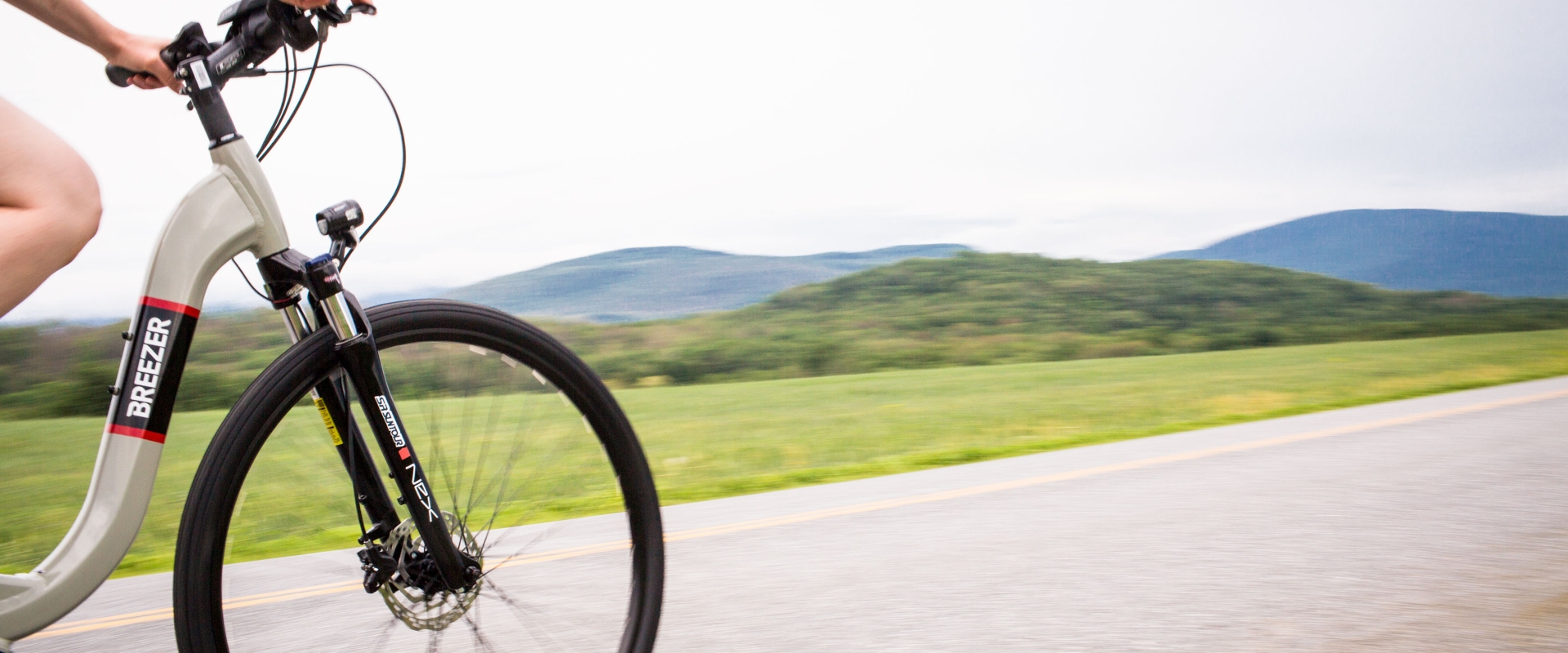Given all the E-bike buzz, we thought you might have questions. So here’s your official E-bike primer, addressing many of the questions we hear from our guests.
How does an E-bike work? An E-bike (sometimes called an electric-assist bike) is equipped with a small battery on the bike’s frame. The battery powers a motor which increases your tire’s rotation, requiring less effort from you, whether on uphill climbs or just at the end of a long ride.
You can choose from four levels of assistance, depending on the terrain, headwind, and how you’re feeling that day.
- Eco mode is the lowest level of assistance. When you’re pedaling at a comfortable cadence, the motor doesn’t assist you at all. If you lose momentum going up a steep hill, the motor will kick in to give you an extra boost.
- Tour mode provides a little more assistance. In Tour mode, you’ll feel a slight nudge of power from the motor when you’re pedaling—and more when you need it. This allows you to comfortably enjoy a longer ride with more elevation gain.
- Sport mode is for cruising along at a fast clip. The harder you pedal, the more power you’ll get from the motor—so it’s perfect for days when you lose track of time chatting with a local wine merchant and need an extra boost of energy to catch up with your friends.
- Turbo mode gives you the most assistance of all. It’s ideal for propelling you up those steep climbs that really challenge your endurance—or just giving you a chance to soft-pedal your way through the end of a long ride without losing sight of your companions.
Where is the battery? On some models, the small battery rests in a compartment on the rear rack. VBT finds it more convenient to store yours on the down tube, the diagonal tube connecting the handlebar stem and the pedal shaft, or on the seat tube, which connects the seat to the pedal shaft. That leaves your rear rack free for your saddlebag.
Is the motor on an E-bike always on, like a car? On some models, yes. But VBT’s E-bikes are assisted (not powered) by a motor. That means you can select the level of assistance you need, whether you’re looking for a little extra oomph to help you keep pedaling longer, or an extra boost of steam to help you crest the top of that steep hill. E-bikes are a great way to extend your ride and see more of the beautiful countryside without feeling like a sagging balloon at the end of the day’s ride.
Do I have to pedal to get the assistance? Yes. While it’s true you can find fully-motored E-bikes out in the wide world, at VBT, our E-bikes only work when you pedal—just like a regular bicycle. You select the level of assistance you need, depending on the terrain and how you feel that day, and the motor kicks in to give you that extra boost. If you stop pedaling, the bike stops—just like a standard bike.
Aren’t E-bikes heavier than regular bikes? You feel the weight of any bike most when you’re climbing hills. Our E-bikes weigh between 44 and 52 pounds. But the electric assist makes up for this additional heft many times over, especially when you’re climbing hills. Think of it this way: E-bikes are hard to lift, but so easy to ride.
How far can I get on a fully charged battery? It depends. If you use a low setting, you’ll use less battery than if you engage the high setting. Relaxed pedaling on the lowest level of assistance can get you up to 50 miles or more. If you frequently use the top level of assistance to increase your speed, you’ll run out of juice sooner. On VBT trips, we ensure that our routes don’t exceed the average battery life.
 VBT Bicycling Vacations
VBT Bicycling Vacations Country Walkers
Country Walkers
